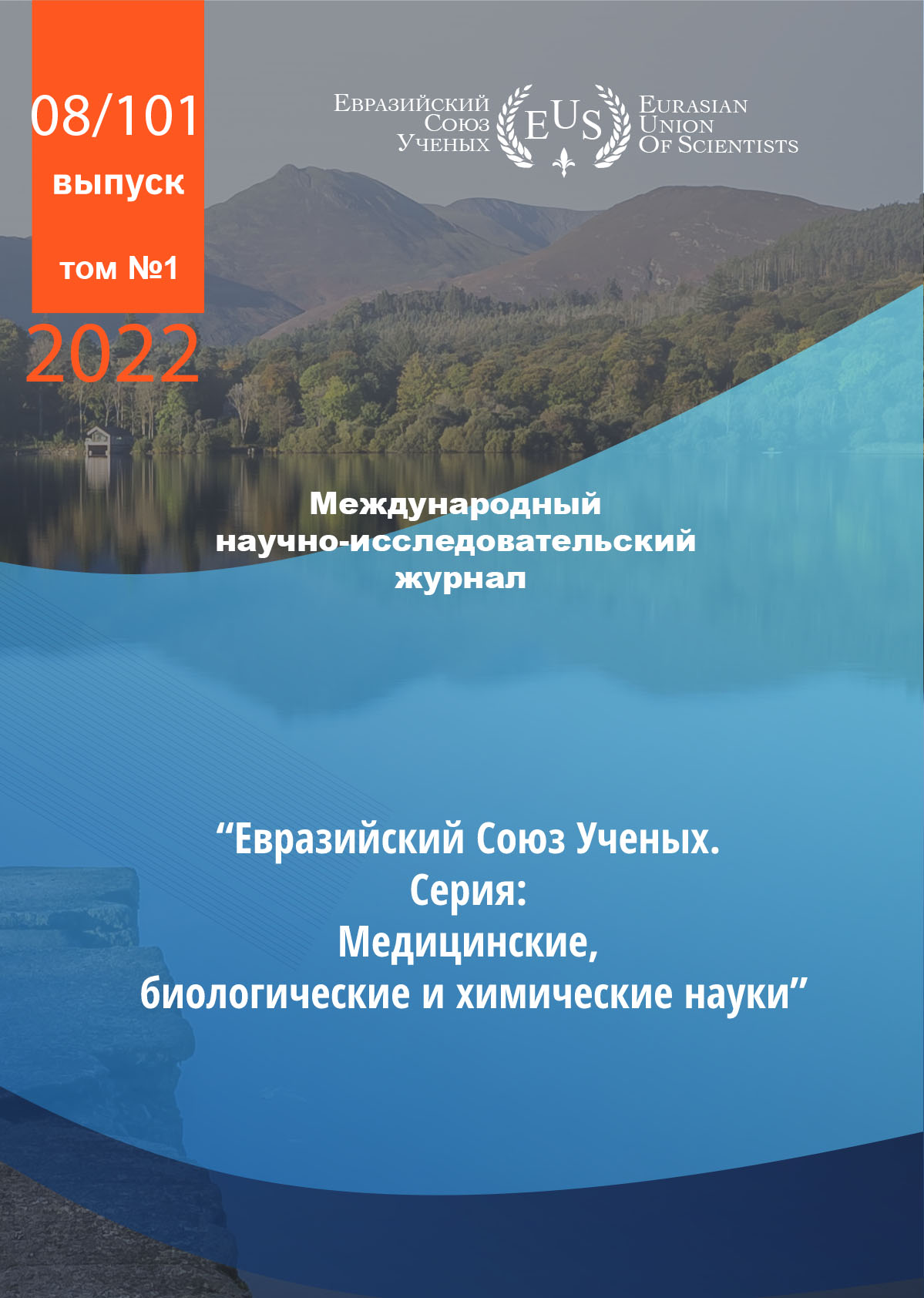ANALYSIS OF THE OPHTHALMIC YAG-LASER PULSES INSIDE THE ANIMAL EYES USING AN OSCILLOSCOPE
Abstract
Purpose: to study laser irradiation inside the eye.
Methods: we performed simulation and analysis of the physical effects of YAG laser during laser capsulotomy
on the enucleated eyes of mature chinchilla rabbits by pulses fixation with photodetectors and evaluation of them
on an oscilloscope.
Results: our study shows that the effect of the laser pulse on the eye membranes can be measured with a highspeed photodetector, that the results are stable and reproducible, the obtained pulses have the same configuration
at all recording points.
Conclusion: the pulse amplitudes behind the posterior capsule of the lens and at the retina, when the pulse is
applied to the posterior capsule, have no statistical difference, this can be explained by diffuse scattering of laser
radiation inside the eye by the inner surface of the eye. Using our experimental model, it is possible to calculate
the peak of the pulse reaching the retina and use this data in further experiments and clinical practice.
References
postmortem. Ophthalmology. 108(3):505-18. https://doi.org/10.1016/s0161-6420(00)00589-3
2. Raj S.M., Vasavada A.R., Johar S.R., Vasavada V.A., Vasavada V.A. (2007) Post-operative capsular opacification: a review. Int J Biomed Sci. 3(4):237-50.
https://www.ncbi.nlm.nih.gov/pmc/articles/PMC3614664
3. Vasavada A.R., Raj S.M., Shah G.D., Nanavaty M.A. (2013) Posterior capsule opacification after lens implantation: incidence, risk factors and management.
// Expert Rev Ophthalmol. 8:141-149 https://doi.org/10.1586/eop.12.80
4. Diagourtas A., Petrou P., Georgalas I., Oikonomakis K., Giannakouras P., Vergados A., Papaconstantinou D. (2017) Bleb failure and intraocular pressure rise following Nd: Yag laser capsulotomy. // BMC Ophthalmol. https://doi.org/10.1186/s12886-017-0408-4
5. Ursell P.G., Dhariwal M., Majirska K., Ender F., Kalson-Ray S., Venerus A., Miglio Cr., Bouchet Ch. (2018) Three-year incidence of Nd:YAG capsulotomy
and posterior capsule opacification and its relationship to monofocal acrylic IOL biomaterial: a UK Real World Evidence study. // Eye 32. pp. 1579-1589
https://doi.org/10.1038/s41433-018-0131-2
6. Ursell P.G., Dhariwal M., O'Boyle D., Khan J., Venerus A. (2020) 5-year incidence of YAG capsulotomy and PCO after cataract surgery with
single-piece monofocal intraocular lenses: a real-world evidence-based study of 20,763 eyes. Eye (Lond), No. 34(5), pp. 960-968. https://doi.org/10.1038/s41433-
019-0630-9
7. Rusin-Kaczorowska K., Jurowski P. (2012) Qualification and methods of laser capsulotomy in pseudophakic eye // Klin Oczna. 114 (2):143-6. Review. Polish. PubMed PMID: 23346805. 2012.
8. Medsinge A., Nischal K.K. (2015) Pediatric cataract: challenges and future directions // Clinical ophthalmology (Auckland, N.Z.), No. 7. pp. 77-90.
https://doi.org/10.2147/OPTH.S59009
9. Batur M., Gül A.S.E., Can E., Yaşar T. (2016) Posterior Capsular Opacification in Preschool- and School-Age Patients after Pediatric Cataract Surgery
without Posterior Capsulotomy. Turk J Ophthalmol. Vol. 46(5):205-208. https://doi.org/10.4274/tjo.24650. Yotsukura E., Torii H., Saiki M., Negishi K.,
10. Tsubota K. (2016) Effect of neodymium:YAG laser capsulotomy on visual function in patients with posterior capsule opacification and good visual acuity.
j cataract Refract Surg. No. 42(3):399-404. https://doi.org/10.1016/j.jcrs.2015.11.042.
11. Hamidov A.A. (2016) Laser reconstructive interventions in the iridocorneal diaphragm area in pseudophakia (clinical and experimental study), M.,
Diss. D. in medical sciences. 329 p. (In Russ.)
12. Cheng J., Pedersen M.E., Wang K., Xu C., Grüner-Nielsen L., Jakobsen D. (2012) Time-domain multimode dispersion measurement in a higher-ordermode fiber. Opt Lett. 1;37(3):347-9. https://doi.org/10.1364/OL.37.000347.
13. Baum O.I., Romanov O.G., Gamidov A.A., Fedorov A.A., Romanov G.S., Zheltov G.I., Sobol E.N. (2016) Optimization of laser technology of secondary
cataract removal. Almanac of Clinical Medicine. T. 44 (2). pp. 130-139. (In Russ.) https://doi.org/10.18786/2072-0505-2016-44-2-130-139
14. Bolshunov A.V. (2013) Laser microsurgery of pupillary membranes in the iridocorneal diaphragm area. In the book: Voprosy of laser ophthalmology. pp.
106-130. (In Russ.)
15. Luecking M., Brinkmann R., Ramos S., Stork W., Heussner N. (2020) Capabilities and limitations of a new thermal finite volume model for the evaluation of
laser-induced thermo-mechanical retinal damage. Comput Biol Med. 122:103835. https://doi.org/10.1016/j.compbiomed.2020.103835.
16. Tyurin V.A. (2016) Digital storage oscilloscope. The device and principle of operation: tutorial. Kazan: Kazan Federal University. 101 p. (In Russ.)
17. Lee C.C., Chuang C.C., Lai B.C., Lu C.L., So E.C., Lin B.S. (2021) Dual-wavelength fiber-optic technique to assist needle cricothyroidotomy. Lasers
Med Sci. 36(3):571-582. https://doi.org/10.1007/s10103-020-03065-4
18. Neudachina O.I. (2019) Technology of installation and maintenance of digital and fiber-optic transmission systems (FOTS). Ulan-Ude: BF SibGUTI, (In Russ.)
19. Brostilov S.A., Torgashin S.I., Yurkov N.K. (2012) Light propagation in a curved multimode optical waveguide. Izvestia Vuzov. Volga region. Technical
Sciences. no. 1. (In Russ.)
20. Nemati B., Rylander III H.G., Welch A.J. (1996) Optical properties of conjunctiva, sclera, and the ciliary body and their consequences for transscleral
cyclophotocoagulation // Appl. Opt. - Vol. 35. - 19. - P. 3321-3327. https://doi.org/10.1364/AO.35.003321
CC BY-ND
A work licensed in this way allows the following:
1. The freedom to use and perform the work: The licensee must be allowed to make any use, private or public, of the work.
2. The freedom to study the work and apply the information: The licensee must be allowed to examine the work and to use the knowledge gained from the work in any way. The license may not, for example, restrict "reverse engineering."
2. The freedom to redistribute copies: Copies may be sold, swapped or given away for free, in the same form as the original.







